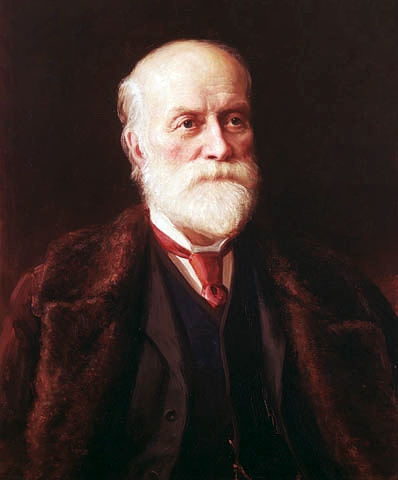Regardless of the mode of travel, just about every trip could prove deadly. From runaway horses to buffalo blocking the rail line, to your ship sinking in a storm or your canoe or barge sinking in a flash flood, your arrival was never a done deal.
But the 1800s were a time of immense progress, and the tales of rich soil and forests and gold fields west of the Mississippi lured many. In fact, many of those tales were fabricated by men who’d never even been west of the Old Man River.
 |
| Photo Courtesy of Donna Schlachter |
Expansion to the west began primarily by settlers following in the tracks of previous explorers, hunters, and trackers. Employing covered wagons, these settlers left most of their lives behind, trading it for a pair or two of oxen or mules, a wagon, and enough supplies to last for several months. Prices for food, clothing, and wagon parts were inflated along the trail because mercantiles and way stations knew they had little competition. But fording rivers, dysentery, and attacks from Indians killed many. It’s said that there is a body buried every mile along the Oregon Trail.
Other dangers included horses stampeding, hunger, getting caught in an early storm in the mountains, losing the trail and perishing from hunger, not packing enough water to cross the desert, along with animal attacks, snake bites, and the various maladies that come along, including appendicitis, broken limbs, and childbirth.
Westward travelers typically left from one of three points: Independence, MO; Saint Joseph, MO; or Council Bluffs, IA. The trails from these cities converged in central Nebraska, following the local rivers across Nebraska and Wyoming. On the western side of the Continental Divide, the Mormon Trail led to Salt Like City, while the Oregon-California Trail took settlers to Idaho. Journeys usually left in the spring to avoid winter storms, but often an early storm caught travelers unawares.
 |
| From Wikipedia Common Files |
Traveling by steamboat was usually much more pleasant, unless you ran aground, as Mark Twain did. Steamboats were popular passage on the Mississippi, although there were other routes, as well, such as Providence to New York. Sailing on the seaward side, strong gales often threatened passengers and ships alike.
 | |
| From Wikipedia Common Files |
Canals were thought to be the next best thing. The Erie Canal, completed in 1825, reduced the time it took to get from New York to Chicago in half, plus it was much more comfortable than riding in a carriage on a gravel or unpaved road.
One comment often made about the ships was that the food was excellent, even compared to the finest of hotels. However, while the cruise sounds luxurious, calm, and filled with good food, not all was well. In some cases, the bridges were so low that folks had to lay flat on the deck to avoid being decapitated.
In 1827, the first thirteen miles of track opened, and because there was a lot of money to be made, expansion happened quickly. However, with no government oversight and substandard construction, train derailments happened often and people died.
Westward expansion of the railroad was slow to catch on, however, mostly because of the Rocky Mountains. Laying rail along that path seemed a fool’s errand. Instead, individual local railroads cropped up, unconnected or duplicative. With the local expansion of railroads, technically, track only needed to be laid between Nebraska and California. Now folks could travel from one end of the country to the other in less than four days, so long as there were no washouts, bison or cattle herds blocking the rail, deep snow, floods…
Passengers asserted that the train seating was far more comfortable than a stagecoach, a covered wagon, or a horse.
In my book, Tina, we find an orphaned young woman who lives in a covered wagon in Loveland, Colorado, who is left in charge of her younger sisters. She must earn money to feed and house them, but when she falls victim to danger, what will she do? You can check out the book here: https://www.amazon.com/Tina-Prairie-Roses-Collection-2023-ebook/dp/B0BWGKGYTL and the series here: https://www.amazon.com/dp/B07R8DSMB4?binding=kindle_edition&qid=1680033081
About Donna:
A hybrid author, Donna writes squeaky clean historical and contemporary suspense. She has been published more than 60 times in books; is a member of several writers groups; facilitates a critique group; teaches writing classes; ghostwrites; edits; and judges in writing contests. She loves history and research, traveling extensively for both, and is an avid oil painter. She also coaches writers at any stage of their manuscript. Learn more at www.donnaschlachter.com/Tapestry
www.DonnaSchlachter.com Stay connected so you learn about new releases, preorders, and presales, as well as check out featured authors, book reviews, and a little corner of peace. Plus: Receive 2 free ebooks simply for signing up for our free newsletter!
Facebook: www.Facebook.com/DonnaschlachterAuthor
Twitter: www.Twitter.com/DonnaSchlachter
Books: Amazon: http://amzn.to/2ci5Xqq
Bookbub: https://www.bookbub.com/authors/donna-schlachter
Goodreads: https://www.goodreads.com/search?utf8=%E2%9C%93&query=donna+schlachter
Need a writing coach? www.donnaschlachter.com/Tapestry
Resources:
Grunge https://www.grunge.com/667139/what-it-was-really-like-to-travel-across-the-us-in-the-1800s/
http://gdc.gale.com/archivesunbound/































